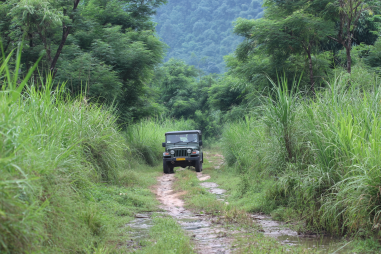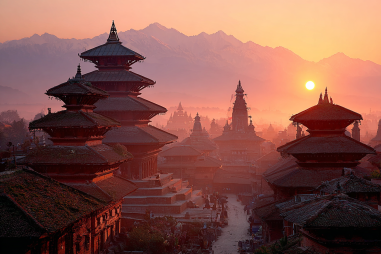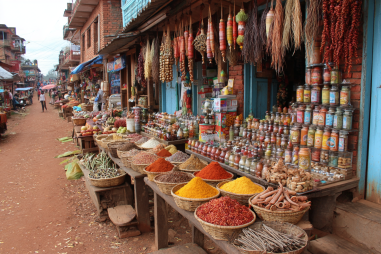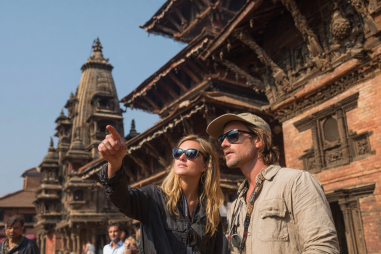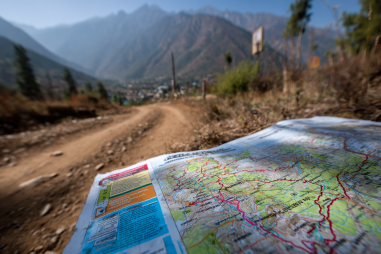Exploring wildlife by day is an incredible experience, but venturing into the wilderness at night unveils a completely different world. Bardia National Park, located in Nepal’s Terai region, is renowned for its diverse wildlife and pristine forest landscapes. While many visitors come for daytime safaris, night safaris here offer a rare and thrilling opportunity to observe nocturnal animals that are elusive during the day. From prowling carnivores to chirping owls, the park transforms after sunset, revealing a hidden side of nature’s rhythms. If you’re considering a night safari in Bardia National Park, understanding what to expect, how to prepare, and how to stay safe will enhance your adventure and help you fully appreciate the wilderness after dark.
An Introduction to Nocturnal Wildlife in Bardia National Park
Bardia National Park is home to a rich variety of wildlife species, many of which are primarily active at night. Animals like Bengal tigers, Bengal foxes, sloth bears, various species of deer, and numerous reptiles and amphibians come alive under the cover of darkness. Birds such as owls and nightjars also emerge during nighttime, adding to the park’s unique soundscape. The nocturnal habits of these creatures mean that a daytime safari provides only a partial glimpse of Bardia’s full biodiversity. A night safari opens a window into the secret lives of animals that avoid the heat, human presence, or predators during daylight hours.
What to Expect on a Night Safari
A night safari in Bardia typically begins just after sunset, allowing visitors to witness the transition from dusk to full darkness. Safaris are usually conducted in an open jeep or sometimes on foot accompanied by experienced guides and forest officials. The atmosphere at night is quieter and more mysterious, punctuated by distant animal calls and rustling leaves. As your vehicle rolls softly through the forest trails, you may encounter the glowing eyes of elusive animals reflected in flashlight beams.
Unlike the daylight safaris, night visits require low light, so spotlights or torches with red filters are used to minimize disturbance to wildlife. This means spotting animals involves patience and keen observation rather than quick snapshots. While you’ll likely see nocturnal mammals like civets, porcupines, or maybe even a leopard or tiger, please don’t expect the same frequency or clarity of sightings as during the day. The slower pace and sense of adventure in exploring a living nocturnal ecosystem, however, are rewarding for those who are patient and curious.
Best Seasons and Timings for Night Safari
The ideal time for a night safari in Bardia National Park is during the dry season, which spans from October to May. During these months, the chances of encountering animals are higher because water sources become limited, drawing wildlife closer to the park’s rivers and watering holes. The post-monsoon period, from October to December, is especially favorable because the forest is lush and animals are more active.
Timing-wise, night safaris usually start approximately half an hour after sunset and last for about two to three hours, depending on park regulations and weather conditions. It’s recommended to check with local tour operators to confirm the exact timing as it may vary slightly depending on the season and park rules.
Safety and Equipment Recommendations
Safety is paramount when venturing into a protected wilderness area at night. Bardia’s night safaris are conducted under the supervision of trained guides and forest officials who know the terrain and wildlife behavior well. Still, visitors should follow all rules strictly, such as staying inside the vehicle or within designated zones and refraining from loud noises or sudden movements.
Proper equipment and clothing will greatly enhance your experience and comfort. Here are some recommendations:
- Wear comfortable, neutral-colored clothing to blend with the environment and avoid attracting insects.
- Closed-toe shoes are important for navigating uneven terrain safely.
- Carry a good-quality flashlight or headlamp, ideally with a red light filter to minimize disturbance to animals’ natural vision.
- A pair of binoculars can help spot distant wildlife without getting too close.
- Bring light snacks and water, but avoid leaving any litter behind.
- Insect repellent is essential to protect against mosquitoes and other nocturnal insects.
- If you’re prone to allergies or motion sickness, bring necessary medications.
Guided Tours Versus Self-Guided Options
In Bardia National Park, night safaris are generally conducted via guided tours due to the park’s wildlife conservation policies and safety concerns. Expert guides and forest rangers lead the safari, providing invaluable insights into animal behavior, conservation efforts, and the ecosystem’s nocturnal dynamics. Their knowledge and experience significantly increase the chances of meaningful wildlife encounters and ensure the utmost respect for the animals and habitat.
Self-guided night safaris are not typically permitted for safety and ecological reasons. The risk of wandering off designated routes or disturbing wildlife can have serious consequences both for visitors and the environment. Additionally, without the guidance of experts, it is easy to miss subtle signs of nocturnal activity, reducing the quality of the experience.
Therefore, booking a night safari through authorized tour operators and park offices is recommended. Choose operators and guides with good reviews and proper credentials to ensure a safe and memorable journey.
Combining Night Safari with Daytime Tours
To get the most out of your visit to Bardia National Park, consider combining night safaris with daytime wildlife tours. Each offers a distinct experience and allows you to see a wider spectrum of the park’s inhabitants. Daytime tours are great for spotting elephants, rhinoceros, deer, and birds in their natural settings under natural light, while night safaris reveal the behaviors of elusive carnivores, nocturnal birds, and smaller critters that vanish during the day.
Many visitors spend a few days in Bardia, spreading safaris throughout the day and night to experience the full range of the park’s biodiversity. Complement your safaris with complementary activities such as river boating, bird watching, or visiting local communities for cultural immersion.
Experiencing Bardia After Dark
Venturing into Bardia National Park after sunset is like stepping into an enchanting world where nature’s secrets unfold in shadow and silence. Night safaris are more than wildlife viewing—they are sensory adventures that engage your hearing, sight, and sense of wonder. The rustle of leaves, the distant roar of a tiger, the flash of a firefly, and the shimmering stars overhead create memories that stay long after the trip ends.
Whether you are a wildlife enthusiast, a photographer eager for unique shots, or simply someone seeking an unforgettable adventure off the beaten path, Bardia’s night safari offers a compelling journey into the heart of the wilderness. Prepare well, respect the environment, and open your mind to discoveries that only come when the sun goes down.


